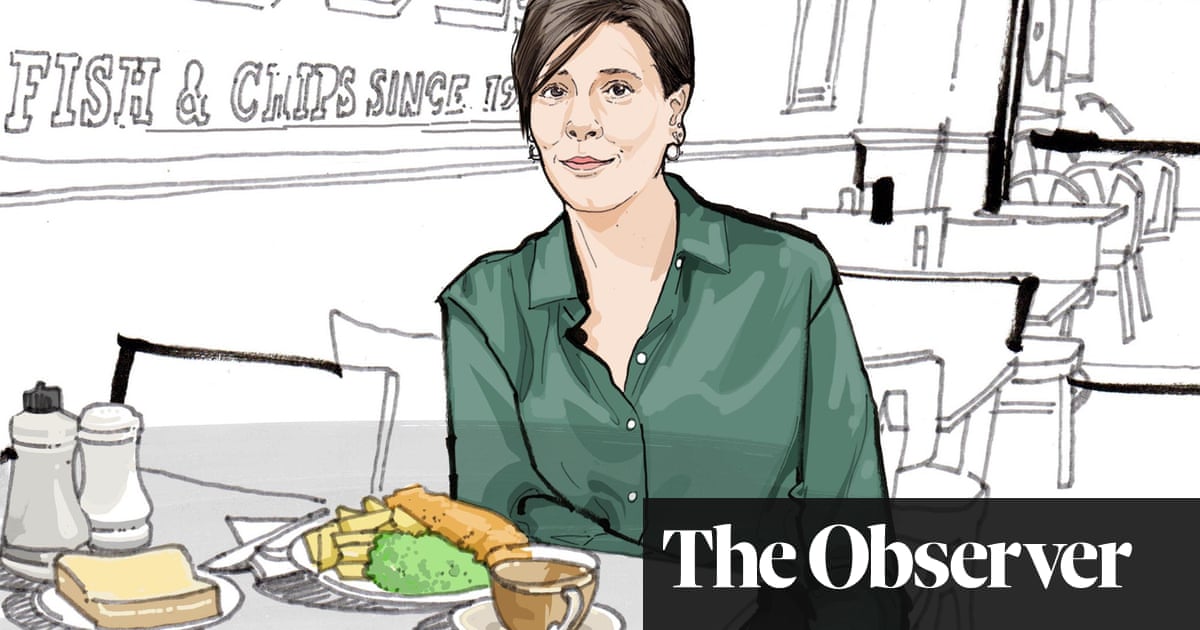
7in singles
I was brought up on 7in singles. My grandparents ran pubs and now and again they’d give my parents singles that had fallen out of the charts and were therefore no longer required by their jukebox. I can vividly remember our copy of You’re the One That I Want by John Travolta and Olivia Newton-John, which had a large hole punched through the middle, as jukeboxes had thicker spindles than regular record players.
In the age of streaming, it’s bizarre to think about how labour-intensive 7ins are. Taking it off the shelf, out of the sleeve, wiping it, putting the needle on the record – you could have listened to a whole tune on Spotify in that time. But singles have a particular magic as the physical manifestation of pop’s greatest ability – to rock your world and change your life in just four minutes. Alex Needham
Cassettes
In the summer of 1983, the Top 40 and the weather seemed to be working in tandem. It was hot, and every hit seemed to sound like hot weather, giving the charts a weird vividness, as if the whole thing had been orchestrated for precisely this moment, like a film score: Give It Up by KC and the Sunshine Band, Double Dutch by Malcolm McLaren, All Night Long by the Mary Jane Girls, Long Hot Summer, Club Tropicana, Cruel Summer. I loved them all, because I was 11 years old and still (just) at the stage where I loved pop music without discrimination. I didn’t buy any of them, but I didn’t need to: I had a radio cassette player and I was pretty handy with the pause button, good at recording all the song and none of Tommy Vance during the weekly chart rundown. When I think of that summer, I think of myself in my bedroom, with the windows open, using my pause button skills to tape War Baby by Tom Robinson: even a fraught song about the looming threat of nuclear holocaust felt like it was designed to float lazily out of the radio on a warm Sunday evening. Alexis Petridis
I still have many of the cassettes I made back then – TDK time capsules, preserving our weekly ceremony of taping the Top 10 off the radio. All week long we would listen, the tail-end of Shout to the Top! blurred by the voice of Simon Bates, Bruno Brookes bursting in on Tiffany. Anything might’ve happened when the next Sunday came around. We were small and the world was mystifying, and who knew why Robbie Nevil’s C’est La Vie fell three places while Pepsi & Shirlie climbed five? Songs, then, were things we caught and briefly held, before they slipped back into the chart’s great river. Laura Barton
CDs
As an obsessive kid and something of an outcast, I found validation in the success of the things I loved. Luckily for me, I was backing the winning team in the Spice Girls, and so in the latter half of the 90s, the singles chart delivered a fairly constant steam of affirmation in the form of nonstop No 1s. I saved my pocket money to buy everything they did – both versions of a CD single if offered, the cassette if I couldn’t scrape together enough 50ps – and sat sentry by the radio every Sunday to hear how they’d performed. (At the same time, for reasons I can’t understand, I recorded every chart on to a set of neon-coloured cassette tapes I got one Christmas, then taped over them again when I ran out.) For years, success was assured. Then the solo single era began and with it a renewed flush of humiliation. How could the nation not share my love for Emma Bunton’s cover of Edie Brickell’s What I Am? Sophie Ellis-Bextor and Spiller beating Victoria Beckham and Dane Bowers to No 1 elicited an evening of tears. Twenty-two years later, I can just about admit that the public was right on that one. Laura Snapes
Downloads
Growing up, I wasn’t following the charts so much as I was surrounded by them. TV channel-hopping in the late 90s and early 00s proved pop was healthily supplied with R&B, rap, garage, crossover house hits and plenty more. Still, I was glad to make my own journey with music, fishing out whatever I could find for free through file-sharing clients Morpheus, Kazaa, LimeWire and µTorrent. Chart results became irrelevant until I had a chance to change them, buying Rage Against the Machine’s Killing in the Name several times to secure it the Christmas No 1 in 2009 in order to hold off that year’s X Factor winner. More than a decade later, the reality-show singles chart industrial complex is no longer the bogeyman it once was, but its legacy remains deeply ingrained in this nation. I’m quite glad to have divested all my attention from it entirely! Tayyab Amin
On-demand streaming
I belong to the generation who experienced the UK singles chart through the lens of online virality, when the impact of a music video could land an instant No 1. The charts always played idly on 4Music at home, and with every passing week, I became familiar and invested in chart positions. It was essential to how I discovered music. Watching Lady Gaga when I was seven – then a chart newcomer with Just Dance – changed my relationship with music and visuals irrevocably. Though my interest in the charts themselves has waned, my love affair with the absurd and provocative videos that they introduced to me has been lifelong. Sophie Walker












